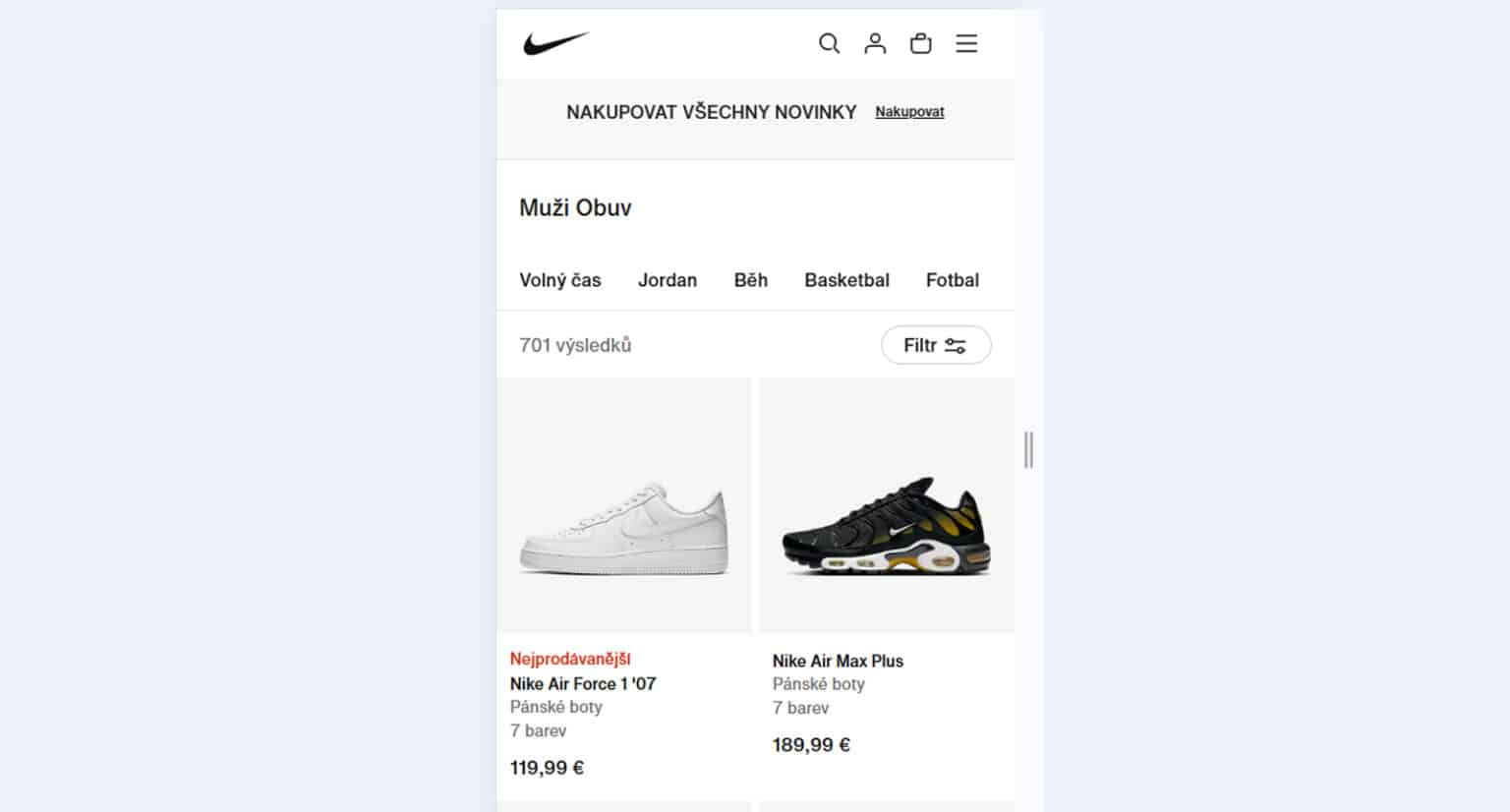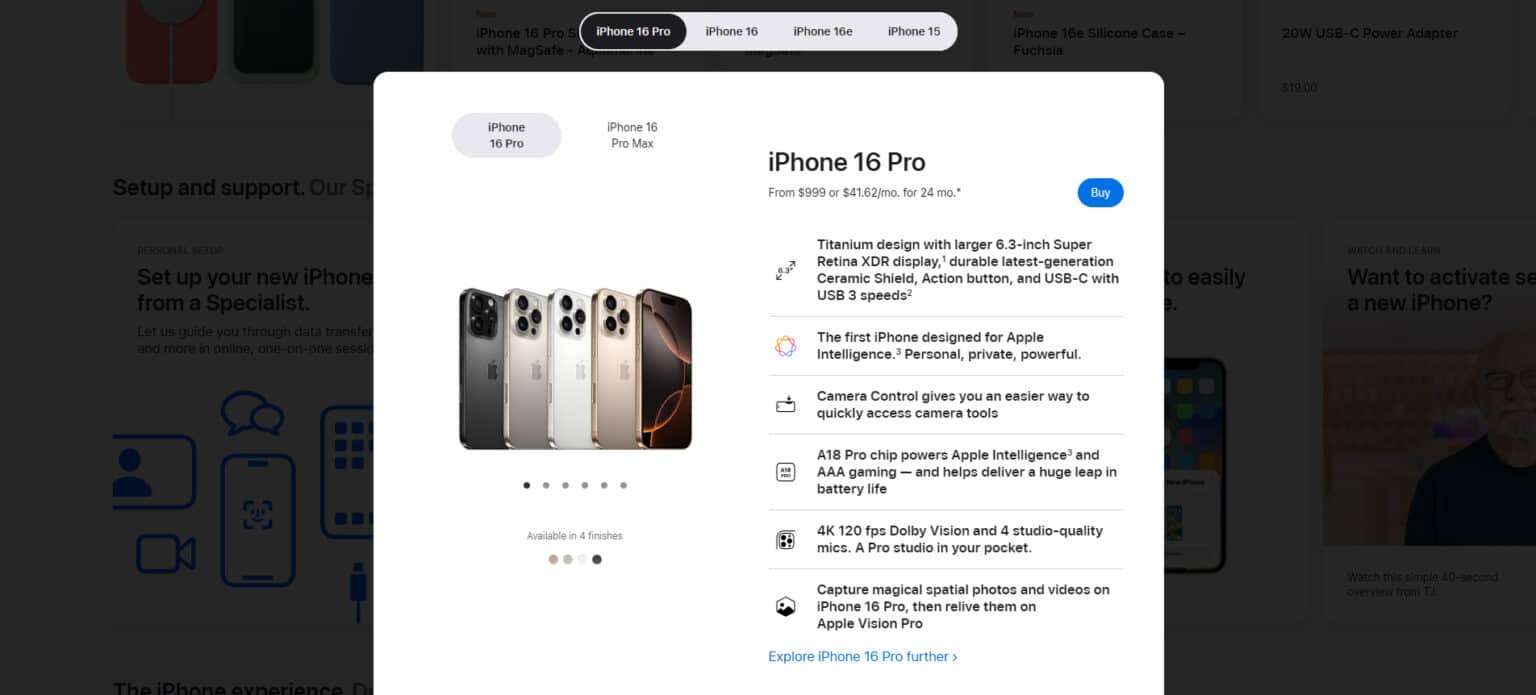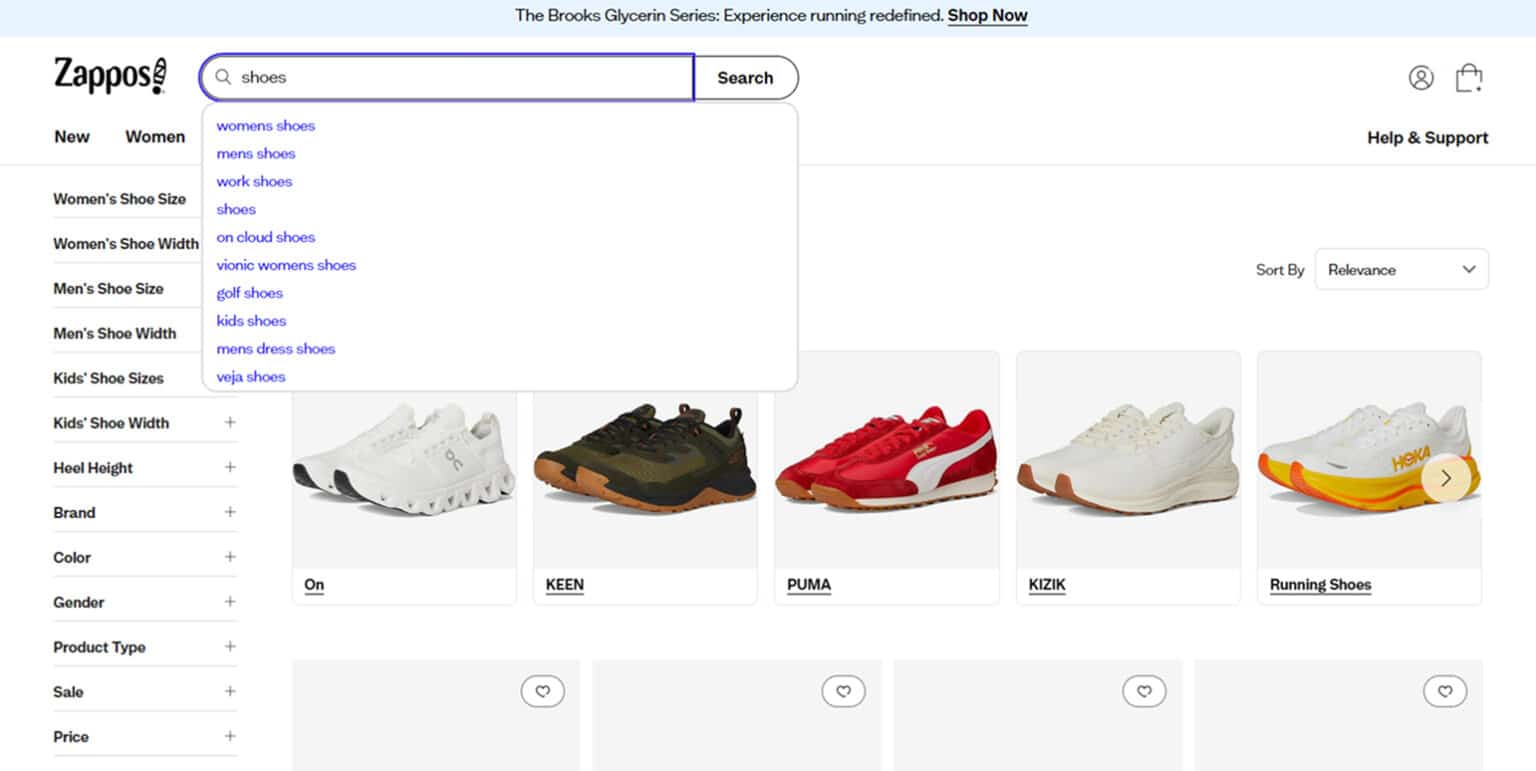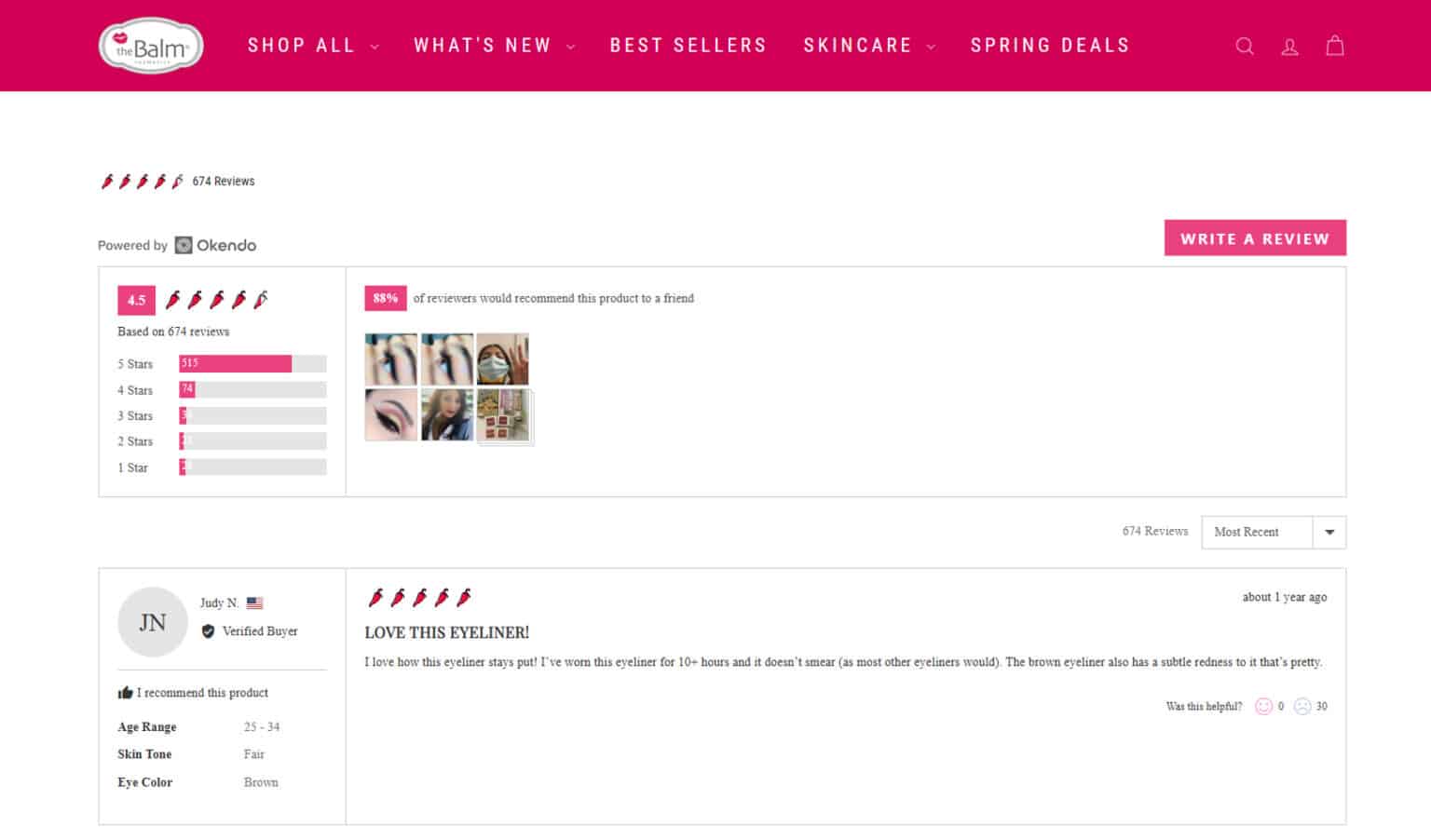7 Essential Features Every Website eCommerce Needs | Muletown Digital
When it comes to eCommerce websites, having a professional design is mission-critical in today’s digital world. Think about how things used to be when people would physically go to stores. We’ve all heard about the old days when window shopping was a thing, and businesses would create beautiful displays to entice customers in. Now, the reality is different—eCommerce is the storefront of the future. If your website isn’t designed with the right features, you risk losing sales, potential customers, and business growth.
A custom domain is also crucial for establishing a professional online presence. It not only aligns with your brand but also enhances the credibility and appearance of your online store.
Here’s the reality: your eCommerce website is like the front door of your business, and having a professional, functional design is vital. Many small businesses can quickly start selling online thanks to the accessibility of eCommerce platforms. These platforms allow businesses to build an online presence with customizable templates, making it easy to list products and manage sales without significant investment. Choosing the right ecommerce solution with comprehensive tools and features is essential for building and managing online stores. In this blog post, we’ll discuss 7 essential features your eCommerce website needs to thrive and stand out from the competition.
Selecting the best ecommerce website builder is crucial for ensuring ease of use, comprehensive tools, and integration capabilities that cater to both new and established online businesses.
Introduction to eCommerce Websites
What is an eCommerce Website?
An eCommerce website is an online store that enables businesses to sell their products or services over the internet. It provides a platform for customers to browse, select, and purchase products from the comfort of their own homes, 24/7. Different types of ecommerce sites, such as traditional online stores, dropshipping, print-on-demand, and digital product sales, offer varied customer experiences and impact online sales differently. In today’s digital age, having a professional and user-friendly ecommerce site is crucial for any online business. It serves as the virtual storefront and can significantly impact the customer experience. The best eCommerce websites offer a seamless shopping experience, easy payment processing, and excellent customer service, making it easier for businesses to stay competitive and reach a wider audience. With the rise of online shopping, a well-designed eCommerce website is essential for attracting and retaining customers, ultimately driving sales and business growth.
1. Clear and Easy Navigation
Why It’s Important:
Just like the storefront window in physical stores, clear and easy navigation is one of the key features of a successful eCommerce website. A well-designed shopping cart in the navigation menu is crucial as it enables users to manage their purchases and streamline the checkout process. A user-friendly navigation menu allows visitors to easily find the products they want to buy. When it’s easy for users to browse, they’re more likely to convert into paying customers.
Example:
Ariat
Ariat has an excellent navigation menu that offers featured products and product categories right up front. Whether you’re looking for boots or sweatshirts, the navigation is clear, and you can filter through options seamlessly. This ensures users can quickly find what they’re looking for without getting frustrated.

2. Mobile-Responsive Design
Why It’s Important:
With the rise of mobile shopping, you can’t afford to have a website that isn’t mobile-friendly. In fact, most eCommerce traffic comes from mobile devices. A mobile-responsive design is crucial to cater to the increasing number of online shoppers using mobile devices. It ensures that your website functions well on phones and tablets, offering the best shopping experience possible.
Example:
Nike
Nike’s mobile website is a prime example of an excellent mobile experience. Their site’s layout adapts perfectly to different screen sizes, making it easy to browse products, select options, and make purchases. With intuitive navigation, responsive design, and fast load times, Nike’s website ensures customers can shop effortlessly on mobile devices.

3. High-Quality Product Images and Descriptions for Ecommerce Websites
Why It’s Important:
Great images and detailed product descriptions are crucial for showcasing physical products effectively in any eCommerce store. Without them, customers will be left guessing about what they’re buying, which can result in a high bounce rate. High-quality images allow users to visualize the product, and clear descriptions make them feel confident in their purchase decision.
Example:
Apple
Apple excels in product imagery and descriptions. Their product pages feature crisp, high-definition photos from various angles, along with detailed information about the product. When customers visit the Apple website, they know exactly what they’re getting, which builds trust and drives conversions.

4. Secure Payment Gateway and Payment Processing
Why It’s Important:
Trust is a critical factor in eCommerce, especially when it comes to making payments. Offering a secure payment gateway with multiple payment methods ensures customer trust and convenience by protecting their personal and payment information. When customers pay using a reliable and recognizable payment system, it boosts confidence, leading to more successful transactions.
Example:
Shopify
Shopify integrates well-known, secure payment options such as PayPal, Stripe, and others. This allows customers to feel safe using their preferred payment method. Using a reputable gateway is key to building trust with your customers and ensuring smooth transactions.

5. Powerful Search Functionality and Search Engine Optimization
Why It’s Important:
A good search feature and SEO are essential for eCommerce websites to improve visibility on search engines and attract more traffic, especially if you have a large inventory. In an online marketplace, visibility is crucial for connecting independent sellers with buyers, offering unique and creative goods, and supporting individual artisans. The search bar should not only provide autocomplete suggestions but also filter results based on customer preferences. The easier it is for customers to find exactly what they want, the higher the chances of conversion.
Example:
Zappos
Zappos’ search functionality is second to none. Their search bar offers filtering options for size, color, brand, and more. It’s designed to help customers narrow down their choices quickly. Whether customers are searching for shoes, apparel, or accessories, Zappos makes it incredibly easy for them to find what they need.

6. Customer Reviews and Testimonials
Why It’s Important:
User generated content plays a huge role in eCommerce. Customer reviews and testimonials, as forms of user generated content, offer social proof and build trust by providing insights into the quality and reliability of your products. When potential buyers see positive feedback from other customers, they are more likely to trust your brand and make a purchase.
Example:
TheBalm
TheBalm’s website features robust product reviews, allowing customers to read feedback from others before making a decision. They even have a search function that allows users to filter reviews based on specific features like product taste or texture. This helps buyers feel confident and informed about their purchases.

7. Clear Calls to Action (CTAs)
Why It’s Important:
Your website should have clear, visible calls to action (CTAs) that are essential for guiding customers through the customer journey and encouraging them to take the next step. Clear CTAs are crucial in motivating customers to sell online by making the process straightforward and accessible. Whether it’s adding a product to the cart or completing a checkout, CTAs should stand out and guide customers through the shopping journey.
Example:
Ariat
Ariat’s website uses bright, bold buttons like “Add to Bag” and “Get 10% Off” to clearly signal what the customer needs to do next. These CTAs are easy to find and prompt customers to take immediate action, increasing conversions on their site.

Bonus: Scalability and Long-Term Growth
Why It’s Important:
A well-designed eCommerce website should offer a full ecommerce solution capable of handling growth and providing comprehensive tools. Building a full online store is crucial for long-term growth, as it allows for seamless management of all aspects of your business from a single platform. Whether it’s more traffic, more products, or expanding into new markets, your website should be able to grow with your business. Investing in a scalable design ensures your website remains efficient as your business evolves.
Choosing the Right eCommerce Platform
Best eCommerce Platform for Online Stores
When it comes to building an online store, choosing the right eCommerce platform is crucial for success. A good eCommerce platform should provide a seamless shopping experience, offer flexible payment options, and have a user-friendly interface. Some of the best eCommerce platforms for online stores include Shopify, BigCommerce, and WooCommerce. These platforms offer a range of features, including customizable templates, payment processing, and shipping methods, to help small businesses and entrepreneurs start selling online.
Shopify is renowned for its ease of use and comprehensive suite of tools, making it an excellent choice for beginners and experienced sellers alike. It offers a variety of customizable templates that allow you to create a unique and professional-looking online store. Additionally, Shopify supports multiple payment gateways, ensuring that customers can pay using their preferred method.
BigCommerce is another top contender, known for its robust features and scalability. It’s ideal for businesses looking to grow, as it can handle a large volume of products and traffic. BigCommerce also offers advanced SEO tools, which can help improve your website’s visibility on search engines, driving more traffic to your store.
WooCommerce, a plugin for WordPress, is perfect for those who want more control over their website’s design and functionality. It’s highly customizable and integrates seamlessly with WordPress, allowing you to leverage the power of both platforms. WooCommerce also supports various payment processing options and shipping methods, providing a flexible and user-friendly interface for both sellers and customers.
Choosing the right eCommerce platform is essential for creating a successful online store. By selecting a platform that offers the features and flexibility you need, you can provide a seamless shopping experience for your customers and set your business up for long-term success.
Building an eCommerce Website
How to Build an eCommerce Website from Scratch
Building an eCommerce website from scratch can be a daunting task, but with the right tools and guidance, it can be a straightforward process. Here’s a step-by-step guide to help you get started:
- Choose a Domain Name and Web Hosting Service:
- Your domain name is your website’s address on the internet, so choose something that reflects your brand and is easy to remember. Once you have a domain name, you’ll need a reliable web hosting service to ensure your website is accessible to visitors.
- Select an eCommerce Platform:
- Choose an eCommerce platform that meets your business needs. Consider factors such as ease of use, customization options, payment processing, and shipping methods. Platforms like Shopify, BigCommerce, and WooCommerce are popular choices for their robust features and user-friendly interfaces.
- Design Your Website: When designing your website, it’s crucial to also focus on how to write copy for your website.
- Create a visually appealing and user-friendly design for your website. Use high-quality images to showcase your products and write detailed product descriptions to help customers make informed purchasing decisions. Ensure your website is mobile-responsive to provide a seamless shopping experience on all devices.
- Set Up Payment Processing and Shipping Methods:
- Integrate secure payment gateways to allow customers to pay using their preferred methods. Set up various shipping methods to offer flexibility and convenience. Ensure that your payment processing and shipping options are clearly communicated to customers.
- Configure Search Engine Optimization (SEO):
- Optimize your website for search engines to improve its visibility and attract more traffic. Use relevant keywords in your product descriptions, meta tags, and content. Ensure your website’s structure is SEO-friendly, with clear navigation and fast loading times.
- Test and Launch Your Website:
- Before launching your website, thoroughly test it to ensure everything is working correctly. Check for any issues with navigation, payment processing, and mobile responsiveness. Once you’re confident that your website is ready, launch it and start promoting it to attract customers.
By following these steps, you can build an eCommerce website that provides a seamless shopping experience for your customers and sets your business up for success.
Designing an Effective eCommerce Website
eCommerce Website Design Best Practices
Designing an effective eCommerce website requires careful consideration of several key elements, including user experience, search engine optimization, and payment processing. A great eCommerce website design should be visually appealing, easy to navigate, and optimized for mobile devices. High-quality images and detailed product descriptions are essential to help customers make informed purchasing decisions. Flexible payment options and a secure payment gateway ensure a smooth and trustworthy transaction process. Additionally, a well-designed eCommerce website should have an easy checkout process and clear shipping methods to enhance the overall customer experience. By following these best practices, businesses can create an eCommerce website that attracts and retains customers, driving sales and revenue. In the highly competitive eCommerce industry, a well-designed website can be the key to standing out from the crowd and establishing a successful online business.
Launching and Promoting an eCommerce Website
Launching an eCommerce Website
Launching an eCommerce website requires careful planning and execution. Once the website is designed and developed, it’s essential to test and optimize it for performance, security, and user experience. This includes ensuring that the website is compatible with different browsers and devices, has a fast loading speed, and is secure with an SSL certificate. After launching the website, businesses should focus on promoting it through various marketing efforts, such as social media, email marketing, and search engine optimization. These strategies will help drive traffic to the website, attract new customers, and increase online sales. By using the right eCommerce platform and following best practices, businesses can create a successful online store that meets the needs of their customers and drives business growth. With the right tools and strategies, businesses can start selling online and reaching a wider audience, whether they have a physical store or not.
Promoting an eCommerce Store
Promoting an eCommerce store requires a combination of marketing efforts, including social media marketing, email marketing, and search engine optimization (SEO). Here are some effective strategies to help you attract customers and grow your business:
- Social Media Marketing:
- Use social media platforms to connect with your audience and promote your products. Share engaging content, such as product photos, videos, and customer testimonials, to attract customers and build relationships. Run targeted ads to reach a wider audience and drive traffic to your online store.
- Email Marketing:
- Build an email list and use it to keep customers informed about new products, promotions, and special offers. Send personalized emails to encourage repeat business and build customer loyalty. Use email marketing tools to automate your campaigns and track their performance.
- Search Engine Optimization (SEO):
- Optimize your website for search engines to improve its visibility and attract organic traffic. Use relevant keywords in your content, meta tags, and product descriptions. Create high-quality content, such as blog posts and articles, to provide value to your audience and improve your search engine rankings.
By implementing these marketing strategies, you can increase customer satisfaction, drive sales, and grow your eCommerce business. Promoting your online store effectively will help you attract new customers, build strong customer relationships, and achieve long-term success.
Choosing the Right Platform
When it comes to building an ecommerce website, choosing the best ecommerce platform is crucial for the success of your online store. Transaction fees can significantly impact the profitability of your ecommerce business, so it’s important to understand both monthly and transaction costs when selecting a platform. With so many ecommerce platforms available, it can be overwhelming to decide which one is best for your ecommerce business. Consider factors such as ease of use, customization options, payment processing, and integrations with third-party apps. A good ecommerce platform should provide all the tools needed to create a seamless shopping experience for your customers. Look for platforms that offer affordable prices, flexible payment options, and scalable solutions to grow your ecommerce business.
Growing an eCommerce Business
Growing an ecommerce business requires tailored solutions for different types of ecommerce businesses, along with a solid understanding of your target audience, market trends, and customer behavior. Analyze your sales data and customer feedback to identify areas for improvement and optimize your marketing efforts. Consider expanding your sales channels to include online marketplaces, social media, and physical stores to reach a diverse customer base. Offer multiple payment options, including digital wallets and credit cards, to make it easy for customers to pay. Invest in a reliable ecommerce platform that provides secure payment processing, flexible shipping methods, and scalable solutions to support your growth. By focusing on customer satisfaction, building strong customer relationships, and staying up-to-date with the latest ecommerce trends, you can drive sales, increase revenue, and establish a successful ecommerce business.
Building a Successful Online Presence
Building a successful online presence requires more than just creating an ecommerce website. Creating your own store allows for a unique and customized online presence, catering to specific business needs. It’s about creating a great ecommerce website design that attracts and retains customers. Your online store should have a user-friendly interface, high-quality images, and detailed product descriptions. Search engine optimization (SEO) is also crucial to increase visibility and drive organic traffic to your website. Consider using an ecommerce website builder that offers SEO tools and integrations with social media platforms to expand your reach. A well-designed ecommerce website can help establish your brand and build customer loyalty, ultimately driving sales and revenue for your ecommerce business.

Conclusion: Build for Success
A successful eCommerce website isn’t just about having products available online—it’s about creating an experience that guides customers smoothly from discovery to purchase within the rapidly growing ecommerce industry. By incorporating these 7 essential features into your website, you’ll have a better chance of increasing conversions, building trust, and growing your business online.
If you’re struggling to implement these features or need help with your eCommerce design, development, or marketing, reach out to us at Muletown Digital. We specialize in creating high-performing eCommerce websites that drive traffic and sales.
This blog has covered key strategies that every eCommerce website needs to succeed. Implementing these features will help enhance your customers’ shopping experience and, ultimately, boost your bottom line.
Reach out today and let us help you build a website that works just as hard as you do!
Ready to improve your eCommerce website?
Contact us at Muletown Digital for expert web design, SEO, and marketing services that will elevate your business.
Other Helpful Digital Marketing Insights
© Copyright 2025 Muletown Digital, LLC. All Rights Reserved.

